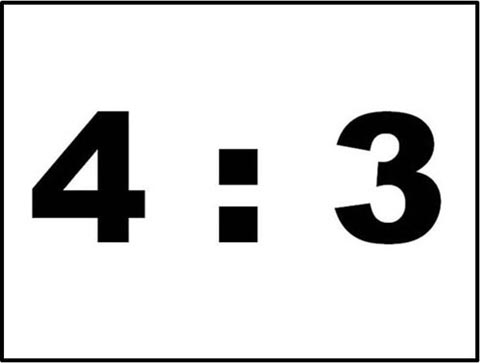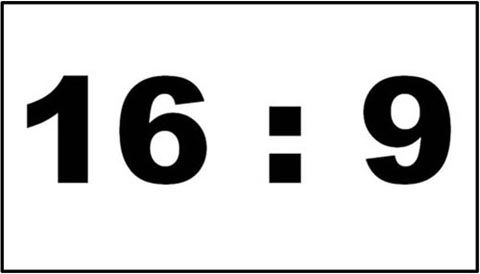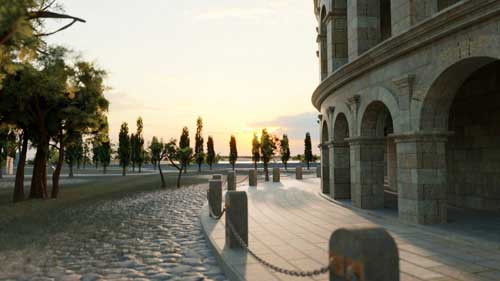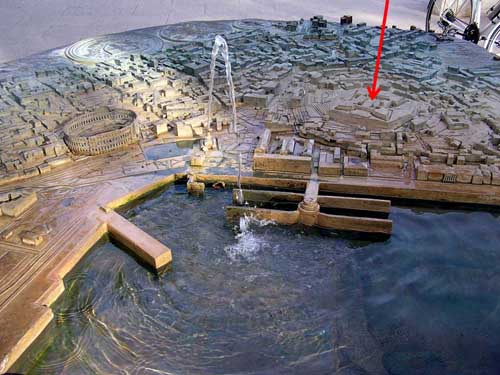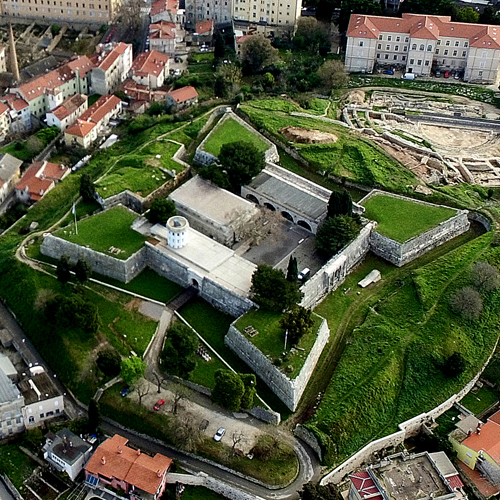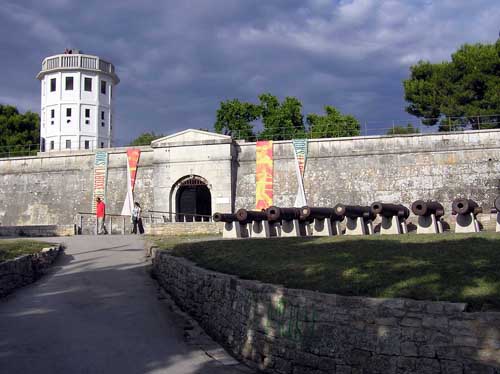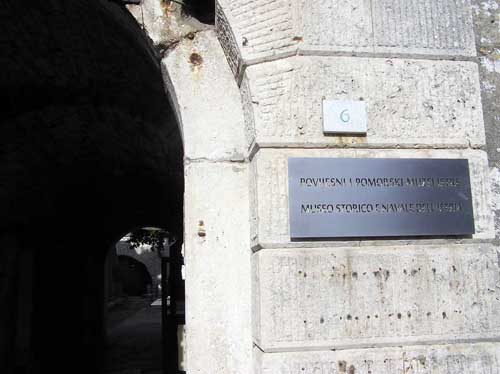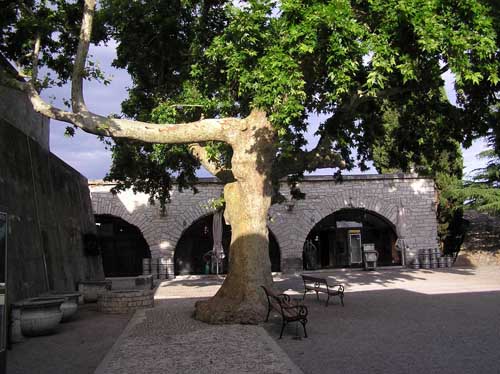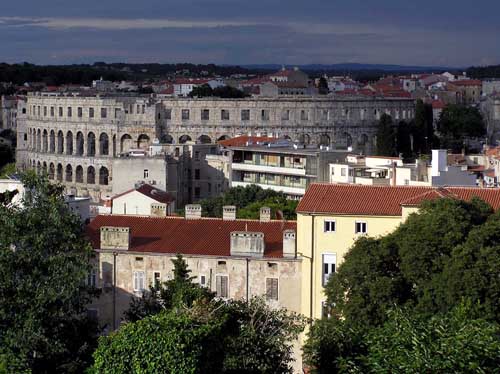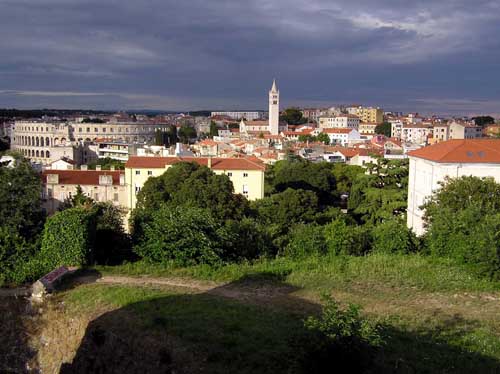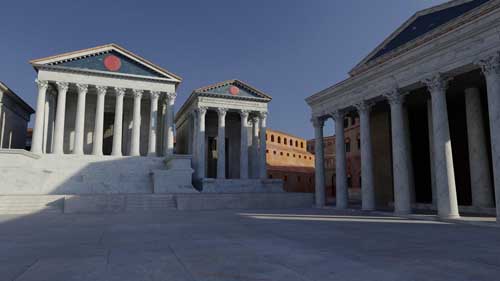Pero and his bike
utorak, 08.12.2020.
Istria 2020 - Part One
If you don't want to read, you can skip the text and see the images of this journey here.
You can see the map of the part one of the journey here.
It is hard to get rid of first impressions.
Many years ago, the number of which I will not deliberately say, patient reader, lest you be shocked, as a boy with a single-digit number of years, I first saw this "the most beautiful of all seas." It was in Dalmatia, in Split, and then on the island of Hvar.
In my boyish head, I then formed the image that the sea, the most beautiful of all, must be accompanied by the greyness of stones and rocks, typical of central Dalmatia. There is very little space in that grey for greenery, and especially for some larger trees.
How I am one of those who difficult changes their attitudes, this image of the ideal sea has been running through my head for a long time, even today in these late years.
Because of this, when I first met Istria and its coast, I was caught by a mixture of confusion and scepticism. It is true that the sea is as blue as in Dalmatia, but if I go a few hundred meters in inland, the abundance of greenery and quite solid forests remind me more of Slavonia, where I have lived for decades, than the coast. The only redness of the soil warns me that I am still far from that Slavonia.
This summer, during my summer vacation, I got the opportunity to cycle around Istria for one day, and to get to know it a little better. And cycling is one of the best ways to get to know an area as it really is.
Right at the beginning, I admit that my impression of Istria has changed for the better.
My base was in Fuškulin village, some 7 km from Poreč town, in the interior of Istria. So, the accommodation itself is something new for me, because staying in Istria so far has been reduced to driving on the main roads to Pula and staying in the Pula auto camp Stoja.
And this is a completely different Istria from the start.
After the start, the journey took me to the Lim Channel, and after it through the places of Bale, Vodnjan and Fažana to the already mentioned Pula town. On the way back after Vodnjan place, I continued to Svetvinčenat place, and then returned via Kanfanar place from where I started.
Here are the names, put in one sentence like this, about which there will be words and pictures below.
Before the concrete story one more note. I filmed everything that was interesting to me with two technical aids. First is my longtime companion - the Olympus C750 camera, still interesting to me primarily because of the 10X optical zoom. The second is the "smart" cell phone Samsung A7, whose special value is in the form of two lenses, the second of which is small focal length, ie ultra-wide, suitable for shooting in narrow city streets.
You will recognize the camera images by the 4: 3 format which I show in the image below
While the cell phone is doing 16: 9 format images, which I show in the image below.
Here, I said about that if it is important to someone.
So, just a little bit after half-past seven in the morning, I started pedalling. The road was narrow but paved, traffic was zero, and the freshness from last night was still ubiquitous. The landscape, as I have already said, is similar to Slavonia, except for redness of the soil. But, if the landscape was similar, the houses were not.
.
They are often larger, but mostly they are more decorated and luxurious than those from my area.
I was specially impressed by the old but beautifully decorated, chimney, as a special feature of this landscape where the winds can be hurricane-force..
e
In Flengi place(by the way, some names of places that were appearing during this today's ride were difficult to pronounce and even harder to remember, probably due to the influence of an overseas neighbour) I went out on a "more important" road than this "ultralocal" ones. This new one was significantly wider, it even had a line in the middle. Namely, the road was the connection of Vrsar town with the south of Istria.
That cycling is especially relevant in Istria I was often proved by traffic signs which were begging drivers for mercy towards cyclists.
After driving through the grove from the image above, I reached the Limski Channel. That grove was similar for the north of Croatia.
Locals say that this is a kind of fjord, so often larger and smaller boats with tourists enter in it. As I watched it into this, still pleasantly cool, morning, with the sun from my back, I admit that my gaze kept on the scene for quite some time even after activating the camera.
I turned to the left. I was watching curiously as the blueness of the water crept into this lush greenery.
Unlike the view of the open sea where there was no one on the surface of the water, here a whole fleet of vessels gathered around some dock. Zooming in, I saw that dock with several boats moored
So, if I enter this channel with an acceptably small vessel, I can dock at the pier and take a walk on land.
I enjoy the downhill of over 2 km. I know that I will pay for this pleasure by, more or less, the uphill of the same length. It awaits me impatiently, almost sadistically, immediately after the end of the downhill. All this is because the Limski Channel continues into the interior of Istria even when it runs out of the water, but then it changes its name to Limska Draga.
The end of that downhill came to me too quickly, probably because everything beautiful in life last short. But it seems to me that the uphill prolonged a lot.
The reason for this is fact that the mentioned uphill is spiced with a special spice in the form of a narrow and winding road. It often had a vertical cliff on one side and a stone fence on the other. And all of that together has been amplified by the dense, very dense traffic (I don’t even know how I caught a bit of peace to take the above shot). There was very little enjoyment in the landscape for me. It was replaced by a game of cat (vehicle) and mouse (me) which alternated by my expectation of the arrival of the next vehicle and squeezing myself and the bike along the edge of the road (and here too in several places I also came a traffic sign "Danger" ! Cyclists on the road! " I was left with the hope that the drivers noticed him as well).
To distract myself at least for a moment from that frustrating situation with traffic, I my put my attention on the confusing sign of crossing the road.
The sign of the crossing was Ok. It made according to all modern traffic safety rules. But what was confusing to me was on the other side of the road. The crossing led straight to a vertical cliff (!?). I did not know if the stairs, or something similar, have not been made yet. Or maybe it was some trim trail along which recreational people should be doing in mountaineering beside walking and running. If anyone finds out, I shall be grateful if he let me know.
But every torment passes, so it was with this mixture of uphill, heavy traffic and narrow roads. I climbed, therefore, to a kind of plateau. The view in front of me widened and again resembled on the already mentioned Slavonian's.
And the road I was driving on also had a makeover, so it’s flat and wide now. The vehicles were driving at a higher speed, but there was enough space for them and me, so the concern reduced far below the tolerability limit.
Relaxed and calm-hearted, I pedalled lazily, almost forgetting the frustrating uphill from the past. I observed the environment without any concrete thought on my mind. I indulged in undefined pleasure. Suddenly, I came in front of a welcome sign in the form of a board on which was written Bale, up, and Valle, down (all the inscriptions of places in Istria are bilingual, up in Croatian, and down in Italian).
I had planned earlier, while devising this ride, to turn into this place, not for touring the place itself, but for turning onto the road towards Barbariga. But man dreams and God determines, so it was just the opposite - I toured the place and I did not head towards Barbariga.
And the place is a real discovery.
In fact, at the end of this day and this ride, I realized that Istria is full of small, little-known places that hide real historical pearls, showing it selflessly to anyone who gives them a minute of their time. As I did it now.
Basically, in the old part of these places, the stone buildings are at least a century old, and some of them even more, and some of them again more and more. It seems to me that the proximity of the sea and seafaring made the economic prosperity of this area at a time when the continental part of Croatia, including my Slavonia, was still living in mud.
But let’s get back to the place with narrow streets through which I was slowly pushing my bike. The streets were paved with stone slabs. I didn't try too hard to make sense of the architecture of the stone buildings. I preferred to enjoy in their scene, as well as the refreshing shade that has been retained since last night.
In the centre of the town was the parish church of the Visitation of the Blessed Virgin Mary to Elizabeth with a bell tower separated from the church itself, which is a general characteristic of the coast area.
With the help of the Internet, I learned that the parish church of the Visitation of the Blessed Virgin Mary to St. Elizabeth is a large white stone building built on the remains of a 9th-century basilica. This parish church is a real record holder because it is the fifth in a row in the same place. Data show that it was built by Tomaso Bembo, the mayor of Bale from 1845 to 1891. The Church of the Visitation of the Blessed Virgin Mary was completed and consecrated in 1882. Today it houses a stone sarcophagus decorated with a 9th-century plait, a wooden crucifix, a Renaissance wooden relief polyptych, liturgical vestments and accessories from the 15th-18th centuries century and a wooden statue of Our Lady of Mon Perin from the 15th century.
(Source:: //www.istra.hr/hr/dozivljaji/kultura/crkve/718)
Unfortunately for me, it was closed, so I borrowed an image of the interior of the church from the website already mentioned.
But what particularly impressed me, and at the same time surprised with its beauty and grace was the town hall.
I learned from the internet that a beautiful loggia was built on the stone-paved square outside the city walls in front of the city palace, which underwent major changes in the 19th century. It has been restored in a neo-Gothic style with an elegant porch at the entrance. Coats of arms are built into the porch, including the coat of arms of the municipality of Bale - a white cross on a black field. In the city palace is still the seat of the municipal administration. The statute approved by the Venetian Republic in 1477 is also kept there. By the way, the Venetian Republic allowed the status of the city on November 16, 1332, calling it Bala terra Vallis or commune de Terre Vallis.
(Source: www.bale-valle.hr/znamenljivosti)
Well, that’s one of the hallmarks of cycling. You don’t expect anything, and you get a whole wealth of experience.
Still, with excitement in my soul, which vibrated far longer than I expected, I forced myself to “get down to earth” and more or less cool-headed to consider continuing the journey.
According to the "read the map and ask the peasant" I asked a lady of mature years, who came to me first, about the road to Barbariga. After she looked at me, completely with the bicycle, she told me that "It's not a road for you! It's hilly and it is not paved!" I would have accepted the first one somehow, but I couldn't stand to drive on the macadam. So I returned to the "main road," by which I came and continued south.
The road went down a gentle, almost imperceptible downhill and curves, so nothing special, almost boring.
Arriving in front of Vodnjan, I turned right towards Fažana. A tour of Vodnjan I left for return.
A slight descent of some 3 km followed. The road was somehow narrowed, although it still kept the line in the middle. Traffic was non-existent so I indulged in enjoying the easy ride along with the mistral which was bringing the smell of the sea into my face.
It was fun for me to drive along the dry stone wall, less than a meter from my right shoulder, behind which was a lush olive grove.
All this together, a slight downhill, lack of traffic, mistral and exotic environment made this ride to Fažana place extremely impressive, so the appearance of the first houses of Fažana caused me sadness for the end of something extremely pleasant. Again, I became aware of the fact that everything beautiful in life is lasting short, no matter how long it lasts. All I have left is the search for the next something beautiful.
Unlike Bale, which, to this day, I did not even know that existed, Fažana has been known to me since childhood, because some of my friends spent their summers there. Upon their return, they enthusiastically told about the place and their experiences, so that my impression of that place as something exceptional has remained to this day. That may be the reason for some quiet disappointment when I came to that place today, after many years.
Was it because of that disappointment, or was it really so, but it seemed to me that the place was smaller in size and less interesting than Bale place (apparently the impression of enthusiasm for that place was still smouldering in me).
A boat for transporting tourists to Brijuni islands was moored on the "main" dock of the place. This connection with the Brijuni islands is one of the main features of Fažana.
A few dozen meters from that "main" dock was the "main" square of the place.
There was the parish church of St. Cosmas and Damian.
It was open, so I was able to take a snapshot of the interior.
In front of the church entrance, I filmed the church tower with the sun behind.
According to the Internet, the church was built in the late Gothic style of the 15th century, and two spolije from the VIII. a century on the outer wall belongs probably to the older building phase of the church (spolije = signs of knightly honour (sword, shield, helmet, etc.) worn at funerals and other ceremonial occasions). A free-standing bell tower was erected next to the church, ending in arched bifora and a pyramid (bifora = window divided by a column into two parts, each with a separate end arch). The interior is equipped with five marble altars on which wooden retabl are placed (retabl = the vertical part of the altar; statues, paintings and reliefs are incorporated into its architectural structure). The north wall of the church is enriched with the painting The Last Supper, by the famous Zadar painter Zorzi Ventura from 1598. The main altar also contains a quality painting - the Risen Christ and the Saints, oil on canvas that has all the features of the Venetian painter Leonardo Corona, created around 1590. On the walls of the sacristy, it is possible to see the remains of frescoes, probably the work of Friulian masters from the 16th century.
(Source: www.infofazana.hr/istrazite/kulturna-bastina/sakralna-bastina/crkve-na-podrucju-fazane-i-valbandona/)
Not far from it, for this place, a magnificent church, a small church of the Blessed Virgin Mary of Carmel has been modestly and discreetly situated.
It is a single-nave church of smaller dimensions built in the 14th century, probably on the foundations of an older one from the 9th century whose remains have not been preserved. On the façade, above the entrance, the bell tower rises with one bell. The attached lopica is from the 17th century (lopica = open porch in front of the church façade, common in Istria in the Baroque period).
Source: www.poistri.eu/search/label/CRKVA%20SV.%20IVANA%20APOSTOLA%20FAŽANA)
Without going into religious beliefs now, I think it must be admitted that the years mentioned, or the centuries cited, are impressive. These centuries show, indirectly, the development of the society too, whether economic or cultural, that inhabited these areas.
I returned to the shore and spotted the promenade in the shade that stretching infinity.
I asked one of the passers-by, who turned out to be a local if I could reach Pula town by the coast. After thinking for a long time, he answered me, not quite decisively: "Well,… you can!". It wasn’t very convincing to me, so I gave up on the intent and went back to the classic road.
That's how I came across Mate Parlov's sculpture. As soon as I saw it I went back to my youth when this boxer was the main one in the box rings in the world.
According to Wikipedia Mate Parlov (Split, November 16, 1948 - Pula, July 29, 2008), is a famous Croatian boxer and Olympic, European and world gold medal winner for the former Yugoslavia. In his professional career, he won the title of European light heavyweight champion in 1976 and the title of world champion in the light heavyweight category at the WBC in 1978. He was the first boxer from socialist countries to win a professional world title. Mate Parlov is the only boxer in the history of the sport who has won Olympic, European and world amateur, as well as European and world professional titles in the same category. After the end of his active boxing career, he lived in Fažana, far from sports and public life. He ran his own Caffe "Mate" in Pula.
On the way out of Fažana, I passed a newly built three-storey residential building which tried to convince me to change my impression of Fažana as a place a little bigger than the village.
So, I started towards Pula on a road where the traffic was significant. The complete opposite of the situation until Fažana. The shade of the trees along the road tried to alleviate the negative impression of the traffic, which was intensified in me by the now considerable heat. Gradually it became clear to me that today would be warmer than I expected.
Wikipedia says that Valbandon is a settlement with 1,626 inhabitants according to the 2011 census. The name Valbandon hides its origin in the medieval, Italian expression "Vala abandonata" which means abandoned or overgrown bay.
Maybe there was that settlement, but of the many hotels, promenades and parks around them, I did not notice it. And because of the heat of the sun, as well as my stomach, which will soon require lunch, I hurried to Pula.
From that Valbandon settlement, which I did not see, there was a new road with fresh asphalt. I was impressed by the care for us cyclists, in the form of a bike path that was separated from the road by which cars and trucks rumbled. It was separated even with two lines.
After multiple uphills and downhills, spiced with heavy, very heavy traffic, I finally arrived in Pula. Immediately upon entering the town, I turned off that heavy traffic road and through the shade embellished by the silence created by the lack of vehicles, I reached the train station, slowly and relaxed.
There I was greeted by a beautiful, luxurious station building, for which I am still in a dilemma whether it is more beautiful from the town side or the side of the rails.
According to Wikipedia, the railway station in Pula was built in 1876. Thus, the last section of the Istrian railway, ie the branch of the Southern Railway from Divača to Pula, was completed. The station building is located at the foot of Monte Ghir on the shores of the Bay of Pula.
To show that in a picture, it was enough for me to just turn around after shooting the station building from the side of the rails.
Unfortunately today, in addition to the weights of the general situation in which the railway is going through difficult and gloomy days, here it is further complicated by the fact that the railway to Pula is a kind of blind appendix, looking at the map of Croatia. Because, in order to, for example, take a train from Zagreb to Pula, in the meantime I have to take a train to Ljubljana, then turn towards Trieste, and before it, in Divača, I finally reach the branch that leads to Pula. So, not only is it long and complicated trip but for that, I need to buy an international train ticket.
In the other hand, there is the finished highway Zagreb - Rijeka, and a lot of work is being done on the second lane of the Istrian highway Pazin - Rijeka. It means that in the near future I will drive almost the entire way from Zagreb to Pula by car on the highway, much faster and easier than by rail.
Definitely, the railway in Pula does not have a rosy future.
It is interesting that little by little, there is news about the construction of the railway connection Pula - Rijeka, which should go through the mountain Učka. To anyone who thinks soberly, with a cool head, rationally, it is clear that this is a pure lie for the sake of appeasing the masses, although it is difficult to resist dreaming of "how-would-it-be-good-when-it-would-be", and so relieve the soul a little. Journalists are certainly the first to know that sometimes a pleasant lie is better than an unpleasant truth.
In front of the station building, especially for railway fans, and I am one of them, there is a steam locomotive with the original signs of the Italian Railways (FS) that pulled trains on this line at a time when the railway was at its peak.
I went back down the street that took me to the station, which is dominated by that mixture of lack of traffic and silence with the intention of an easy drive to the city centre.
I didn't drive for very long, only a few hundred meters, so I stopped. The reason for the stop was the next architectural beauty of this town.
According to Wikipedia, it is the Grand Hotel Riviera or Palasthotel Riviera, which was opened in 1909. It was built according to the project of the Viennese architect Carl Seidl. After construction, it was for a long time the largest and most luxurious hotel in Pula. This massive neo-baroque building with rich Art Nouveau decoration and a large balcony on the main façade was built in an extremely convenient location outside the historic centre. For many years it was the main gathering place for filmmakers during the Pula Film Festival, and today it is owned by Arenaturist, where it has the function of lodging for the night.
Beneath that large balcony on the main façade, I had the honour and pleasure of cycling.
And then I reached the main attraction of this town - The Pula Arena!
According to Wikipedia, the construction of the Arena took place in several phases during the 1st century. It is believed that as early as the time of Emperor Augustus, a similar building stood in the same place, but smaller and mostly made of wood. During the reign of the Flavian dynasty (Vespasian, Titus, Domitian) in the second half of the 1st century, the Arena was further expanded, and wooden parts were replaced with stone, and the Arena took on its present appearance. It is not yet completely known why the Romans built such a monumental building in Pula. One legend says that the amphitheatre in Pula was built by Emperor Vespasian in honour of his mistress Antonia Cenida, who had estates in Pula. The amphitheatre in Pula or Pula Arena (popularly known as Divić-town) is the largest and best-preserved monument of ancient architecture in Croatia. Comparing it to more than 200 Roman amphitheatres, the mantle of the Pula amphitheatre with four stair towers is the best preserved and rare example of unique technical and technological solutions. It ranks 6th in size among the Roman amphitheatres in the world and is the only one in the world whose all three Roman architectural rows have been fully preserved.
Looking at it as a whole, or just some of its details shown in the above two shots, I stood mesmerized, mouth open and eyes wide. I don't know what was more impressed to me, the beauty and grace of the building itself, or the precision and processing of the stone blocks that the arena is made of, bearing in mind that they have stood here for almost two thousand years.
It took me a long time to get back to the present. Maybe it was helped by the sun, which was already starting to burn well, and at the same time, it reminded me that I was only halfway through today’s journey. So I moved on by saying goodbye to the ancient building. Too bad, it could have told me all sorts of stories about what’s was going on around it in these nearly 2,000 years. And maybe it’s better this way because I would stay here forever, listening to who is, when, how, and why was living here, what he wished for by doing what he did and what it eventually turned into. People come, be and go, but the consequences remain.
Because of the sun above me "the source of all life on this planet", which tried to justify it with its heating, I intended to continue along the sea to the "Stoja" campsite. The camp is located south of the town, on the other side of it. I gave up further touring the town because I did so two years ago, so I will now take the captured images as an aid to further describe my stay in this town.
First of all, here is another shot of the arena, this time dressed in an evening gown.
On the website, https://www.helloistria.com/mjesta/virtualna-pula-moderni-vremeplov-kroz-anticki-grad/ I found interesting pictures that represent the reconstruction of old Pula buildings as they looked when they were finished with construction. So one detail of the arena from almost 2000 years ago could look like this:
After the arena, what must be seen and climbed is the castle.
According to Wikipedia, the castle, ie the Venetian fortress in Pula, was built on the most important strategic place in the Bay of Pula, on a hill where the Histri previously located their fort, the Romans castrum, and the feudal lords a medieval castle.
The fort was designed and led to construction for the Venetian Republic by the French military engineer Antoine De Ville between 1631 and 1633. It was part of the defence system of Pula in the XVII. century, which still included the fortress on the island of Sv. Andrew and two defensive belts (embankments). The first one approximately along the route of today's Castropole Street, and the second one along the perimeter of the ancient and medieval walls that were reconstructed and filled in to adapt to the then war tactics of defence and the power of weapons.
The position of this hill, together with the castle, is vividly shown on a bronze model of the city which was located at the entrance to the park, not far from the arena. I marked with a red arrow the castle and the hill on which it is located on the image below.
How this castle looks from a bird's eye view was helped by the website http://www.pulainfo.hr/hr/where/kastel, from which I borrowed the below image.
To climb the hill I had to go - uphill! Here was facilitated by a narrow, but still paved road, on which I nevertheless walked. Those more persistent than me would drive this without any major problems.
I quickly reached the top of the hill on which the mentioned castle was. As can be seen from the attached pictures, the lazier ones can also come by car.
Immediately at the entrance to the castle was an inscription that speaks of the current function of the castle. It is far more peaceful than it was before - the Historical and Maritime Museum of Istria.
After the bike and I slipped through the walls at the entrance, a larger yard with a huge plane tree appeared in front of us. Judging by the size, more precisely the diameter of the tree, the plane tree has witnessed all sorts of turbulent times throughout history, so it, as I said above about the arena, could tell a lot of interesting things. Fortunately, as is the same with the arena, it cannot, so I nevertheless will end this journey today.
On the other side of the courtyard was a boat, typical of this area from some historical times.
It was not my intention to tour the interior of the castle, promoted to a museum at this time, but to walk through its walls in search of a good view of the town. But as I consider myself one of those who must have at least something of their own on a bike, or an ass, or an arm or a gaze, I set out in search of a strategic place where I would keep an eye on my bike as I walked the walls.
When I took care of the bike, I started walking along the walls, observing the town. Occasionally I have been looking at my faithful and patient companion on two wheels.
Sure, Arena first!
Not far from the arena is the monastery and the church of St. Anthony, whose more detailed tour I left for some other time.
Below you can see how the walls looked like on which I was walking.
There was also a view of the already described railway station.
The nearness of the sea indicates that the Pula railway station is at an altitude of only one to two meters.
On the other hand, the view betrayed an urban Pula, usual for any town.
There are also large cranes of the Pula Shipyard
Inside the walls was a tower with an observation tower. It was ideal for filming the surroundings. I, however, contented myself with the walls. Still, I took one shot to see, on occasion, how I would look with a camera in hand while I am looking for a motif.
And finally, as far as the castle is concerned, here is what the entrance to it looked like, by which I I came in it.
After the castle, I went down to the very centre of the town. In doing so, I passed through typical coastal streets, such as this one.
This town centre is called the Forum, and the Town Hall here called the Communal Palace. To the left of the Communal Palace is the Temple of Augustus.
According to wikipedia, the representative Gothic Communal Palace was built at the end of the 13th century at the time of the town's prosperity and independence. It is a reflection of the possibilities and ambitions of rich Pula families. It was created by redesigning the existing buildings that had previously served a similar purpose at that location, and was completed in 1296.
Another encounter with the methuselah of millennial proportions follows - the Temple of Augustus.
And again, according to Wikipedia, the Temple of Augustus is a well-preserved Roman temple in the centre of Pula (in Roman times Pola) on the central town square Forum. The temple is dedicated to the first Roman emperor Augustus. It was built during the emperor's lifetime between 2 BC. Kr. and his death in the year 14 AD. Under Byzantine rule, the temple was turned into a church, which allowed it to survive until modern times when it was turned into a granary to house a museum of stone monuments in the early 19th century. During the Allied air attack in 1944, it was hit by a bomb and almost destroyed, so in 1947 it was reconstructed. Today it serves as a lapidary where Roman ancient stone and bronze sculptures are exhibited.
According to the already mentioned website "Virtual Pula", the Temple of Augustus, when it was newly built, looked like this:
If anyone thought that he saw a choir in front of the temple of Augustus, it was true and he has good eyes.
By coincidence, which some call happiness, and others God's providence (in which someone already believes), I found myself in the centre of Pula just while a cultural and artistic program was performing. What kind of program, I didn't find out, and I wasn't even interested. More interesting would be the small details that, if not captured in time by the camera lens, go down in history unnoticed.
I was especially interested in the beauty in folk costume. Whether she was a beauty anyway, or she became a beauty by the uniform she wore it remained unclear for me, which was not important at the moment. More important to me were the moments of fixing the cap, or resigned anticipation, resolved using a cell phone. That very moment was especially interesting to me, a combination of a modern cell phone and traditional costume.
I was still a boy when I heard from my grandmother the following: "Just feed a male person and send him naked into the world, and he will succeed, and a female need only to dress well and send her hungry into the world, she will also succeed!" So, both through the centuries and today, it is important for a woman to look fine. That's why you should use every opportunity to fix that famous look.
Walking through the narrow streets of Pula, I came to the next interesting thing of this town - the Arch of Sergius
According to Wikipedia, the triumphal arch of the Sergii (often called the Golden Gate) is an ancient Roman triumphal arch. It was erected in memory of three members of the Sergius family, especially Lucius Sergius Lepidus, a tribune who served in the Roman Legion, which took part in the battle of Akcija. It is assumed that the triumphal arch was built between 29 and 27 BC. Kr. The Sergians were a powerful family in the colony and retained their power for centuries.
Again, I reached for the "Virtual Pula" page to take you back in time by more than 2,000 years, and to show you what the triumphal arch looked like, just built.
Right next to this triumphal arch were some Venetian buildings. I didn't go into researching who built them and when I leave them here for just one reason - they looked beautiful to me.
And so much about that 2018! Let’s get back to this hot and sunny 2020.
Wanting to get through the town to that campsite as soon as possible, I went along the waterfront.
Like the aforementioned railfan, I was interested in railroad tracks. I can only imagine how particularly interesting it would be for a train to pass through the street.
Along the way, I filmed fishing boats resting in the harbour after, I guess, a working night.
Before this road, on which I drove, left the sea, I passed by the shipyard "Uljanik". Just a few dozen meters from the road, on the other side of the fence, next to it while a huge ship was moored on which they were working. I said huge, because it looked like that to me. Maybe his relative closeness made such an impression on me, and maybe he is huge, it remained unclear to me.
The road, or street by which I continued to drive on, ran between an unbroken row of stone-built buildings on the right and a vertical cliff on the left. These on the right were, I suppose, the shipyard premises, and that cliff on the other side was the result of taking the space from the hill needed for the road.
A few hundred yards away I came across worker's dwellings, built, perhaps, a hundred years ago. Most of them were decrepit, thus showing the current situation in the shipyard, but I also came across one restored. It’s amazing how much the renovated building improves the impression of it!
Near these dwellings, I came across an interesting graffiti with a message that would be good to consider it.
(ČUVAJ SRCE = KEEP YOUR HEART)
A few more times uphill and downhill and I finally found myself in front of the entrance to the Stoja campsite.
I spent my summers there several times, and for the first time almost 30 years ago, so I wanted to cycle around the camp a bit.
I said this, as kindly as possible, to that person in the light blue shirt in the picture above, because I correctly concluded that he is some official in charge of vigilantly watching who enters and leaves the camp. I guess that he was under the impression of my kindness, but still, with a still stiffly cold, official face, he only nodded briefly and let me passed by.
Finally, I entered the heavenly shade of fragrant pine.
There were still luxurious bungalows where the pleasure of staying 20 years ago cost € 100 a day. Probably nothing less today, if not more, but I didn't care about it at the moment.
I was more worried about the sun above me which was radiating too much heat. Besides that, I was just halfway there, and even more, I was hungry. So I sped up the circle around the camp.
But before lunch and leaving the camp, I still filmed the beach, that is, the "beach" of the camp.
The camp is located on a peninsula whose coast is mostly rocky, so although it looks the opposite in the picture below, you can easily reach the sea and just as easily find a place to sunbathe.
Immediately after leaving the camp on a stone bench, I found a place for today’s lunch. The bench was in some shade and is an integral part of a larger roundabout, and at the same time, it was a city bus stop.
Lunch is “from a backpack,” as hikers would say, and to make it easier to glide through the throat, there was a bottle of cold beer.
And so, I sit, lazily chewing on watering bites, observing the people and happenings around me, gradually indulging in a blissful sense of unconsciousness of neither time nor myself, when someone "wakes me up" with the comment, "Well done! Where are you riding from?"
He was, in my opinion, still a young man, about 35 years old, dressed in a running suit. When I told him where did I come from and where I am riding to, it thrilled him even more. He told me that there are few such people (like me, I guess) and that it is the best way to maintain health, both mental and physical. He is just now returning from a multi-kilometre run.
And so the two of us talked, more precisely he more than me. The more he turned to himself with the story, the more the original smile of enthusiasm for me and my bike turned into a sarcastically bitter expression towards himself. He told me that he considers himself a member of the "lost generation" of this country, born in the 70s. Those generation that failed to "manage" in transformation and wild capitalism. Until a couple of years ago, he worked a nonsensical job in the same company and for the same salary, only to be "gladden" in the end - by being fired. So he is now still unemployed, albeit at the peak of his life.
Eventually, he greeted me, regaining that smile from the beginning of our conversation and left.
I felt that he had left me that sarcastic bitterness, because, against my will, and encouraged by his story, from the unconscious corner of my memory, a line of people I knew came out in front of me, for whom I can say that some of them belong to that group under called the "lost generation."
I had some ambivalent feeling in which the enthusiasm alternated that my appearance had given someone joy and bitterness because of the subsequent story of the fate of a young man who, because of the situation he is in now, he is no more - young man.
I quickly finished lunch, almost not feeling it anymore, packed my things on the bike and moved on. I got out of that bitterness
of reality by escaping from it and going down in history.
Only a few hundred meters from this place was the entrance to the military complex of the then "Yugoslav Navy", which, against my will, I had to give a year of my young life (would, at least some, then young men who, like me then, had to join the army, could be called members of another, lost generation !?). Today, that entrance seemed to show by its appearance what was at the end of that "Yugoslav" and that "navy". Still, I did not feel any (evil) joy looking at the remains of the gate, just some sadness about the meaninglessness of politics.
I came back to the present satisfied, even happy, with my development since then.
You can view the continuation of this travelogue here.

Dnevnik.hr
Gol.hr
Zadovoljna.hr
Novaplus.hr
NovaTV.hr
DomaTV.hr
Mojamini.tv
Comments
Any kind of comment, please send it to
pero.dupcek@gmail.com
You can see these and some other travelogues in the Croatian language here.
Retro rides
The River Tara and its bridge
Under which circumstances your narrator experienced one of the two most lively moments ih his life in 1985
The first time with the girlfried to the coast
How romantic was it around me, around her and around the bike in 1986
Honeymoon 1987 Part One
Part one of the best Honeymoon of all Honeymoons
Honeymoon 1987 Part Two
Part two of the best Honeymoon of all Honeymoons
Days rides
Caroline 2016 - Part One
Part one of the riding on the Caroline road
Caroline 2016 - Part Two
Part two of the riding on the Caroline road
Istria 2020 Part One
The first part of a story about Istria that I didn't know until now
Istria 2020 Part Two
The second part of a story about Istria that I didn't know until now
Multi-day Rides
The Krasno village between 20 years - Part one
The first part of the story of two ridings on the same route with a time interval of 20 years
The Krasno village between 20 years - Part two
The second part of the story of two ridings on the same route with a time interval of 20 years
Ochevia 2013 - Part One
The first and second day of the journey to the village of Ochevia (Očevija) in Bosnia
Ochevia 2013 - Part Two
The third and fourth day of the journey to the village of Ochevia (Očevija) in Bosnia
Alone in summer 2015 - Part One
The first part of the journey that is, in some way, the extension of the journey to Ochevia 2013
Alone in summer 2015 - Part Two
The second part of the journey that is, in some way, the extension of the journey to Ochevia 2013
Alone in summer 2015 - Part Three
The third part of the journey that is, in some way, the extension of the journey to Ochevia 2013
Alone in summer 2015 - Part Four
The fourth part of the journey that is, in some way, the extension of the journey to Ochevia 2013
Alone in summer 2015 - Part Five
The fifth part of the journey that is, in some way, the extension of the journey to Ochevia 2013
With a girlfriend to the sea, again! The August 2nd
The first day of the great journey
With a girlfriend to the sea, again! The august 3th
The second day of the great journey
With a girlfriend to the sea, again! The August 4th and 5th
The third and the fourth day of the great journey
With a girlfriend to the sea, again! The August 6th
The fifth day of the great journey
With a girlfriend to the sea, again! The August 7th
The sixth day of the great journey
With a girlfriend to the sea, again! The August 8th
The seventh day of the great journey
With a girlfriend to the sea, again! The August 9th and 10th
The eighth and the ninth day of the great journey
With a girlfriend to the sea, again! The August 13th
After two days of rest, this is the story of the twelfth day of the great journey
With a girlfriend to the sea, again! The August 14th and 15th
The thirteenth and the fourteenth day of the great journey
With a girlfriend to the sea, again! The August 16th and 17th
The last two days of the great journey
The Island of Hvar- First attempt 2019, Part one
The first part of the journey to the Island of Hvar
The Island of Hvar - First attempt 2016, Part two
The second part of the journey to the Island of Hvar
The Island of Hvar - First attempt 2016, Part three
The third part of the journey to the Island of Hvar
Knin - Split 2020 Part One
The first part of the journey in southern Croatia
Knin - Split 2020 Part Two
The second part of the journey in southern Croatia
Knin - Split 2020 Part Three
The third part of the journey in southern Croatia
Knin - Split 2020 Part Four
The fourth part of the journey in southern Croatia
The Una River - Introduction and the first day 2019
The story of the river Una, the one and only
The Una River - The second day, the return and after the return, 2019
The story of the river Una, the one and only
The Una River - The first day again 2021
The story of the river Una, the one and only
The Una River - The second day again 2021
The story of the river Una, the one and only
The Una River - The third day 2021
The story of the river Una, the one and only
The Una River - The fourth day
The story of the river Una, the one and only
The Una River - The fifth day, Part One
The story of the river Una, the one and only
The Una River - The fifth day, Part Two
The story of the river Una, the one and only
The Una River - The sixth day, Part One
The story of the river Una, the one and only
The Una River - The sixth day, Part Two
The story of the river Una, the one and only
